The Grating Material window
See on another page: Adding a grating material.
- General Overview
- Related Tools
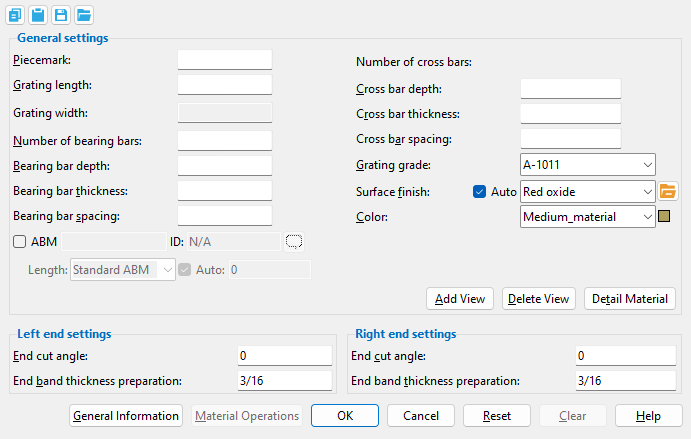
![]() Copy, Paste, Save, Load buttons:
Copy, Paste, Save, Load buttons:
------ General settings ------
Piecemark: Blank or any text string (up to 61 characters). This is the submaterial piecemark.
If this field is left ' blank ', then when this material is generated (after you press " OK "), SDS2 piecemarking looks for materials in the current Job that are physically identical to this material and assigns to this material the same mark assigned to those materials. If no matching materials are found, piecemarking assigns this material a piecemark using the appropriate material mark prefix listed in Home > Project Settings > Fabricator > Member and Material Piecemarking > the " Prefixes " tab.
Any ' text string ' that you enter must be unique. Validation does not let you enter a piecemark that has already been assigned to materials. If you are adding a grating material, a piecemark entered here only applies if the material you are adding is unique -- if the material is exactly the same as previously added materials, the new material gets the piecemark of those previously added materials. On the other hand, if you are editing the material, all materials that are exactly like this material are re-assigned the unique mark you enter when this material is generated (after you press " OK "). The piecemark you enter remains a system piecemark , which means that it may be changed if you later edit a material just like this one and give that material a different piecemark.
Tip: If you want to change a submaterial mark, you should use Rename Project Items in Utility Options . That way all references to the submaterial mark are changed throughout the your current Job, even in Drawing Editor drawings.
Note 1: A submaterial mark is not yet assigned when this window opens for an add material operation. A piecemark is shown when you Edit Material or Review 2D Items . For the current quantity of materials assigned this piecemark, see the " Current quantity " listed on this material's General Information window.
Note 2: Two grating materials may have the same submaterial mark, but different submaterial mark index numbers , when certain " Left end settings " on the one material are the same as certain " Right end settings " on the other material.
Report Writer: MemberMaterial.Material.MinorMark
Parametric module: MinorMark
Grating length: The actual length (in the primary dimension " Units " or other units ) of the grating along its longitudinal axis ( material axis ).
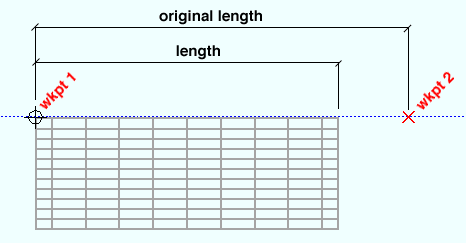
Note: Length is added to/subtracted from the end of the grating that is opposite to the first point added. Changing this distance adjusts the " Number of cross bars " while keeping their thickness and spacing the same.
Report Writer: XXXXX . Length
Advanced Selection: Length
Parametric module: Length
Grating width: This is a read-only information field that tells you the actual width (in the primary dimension " Units ") of the grating along its Y material axis .
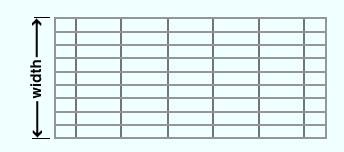
Note: Grating width is calculated based on the following formula:
Grating Width = [( number of bearing bars - 1)( bearing bar spacing )] + bearing bar thickness
This means that if you change the " Number of bearing bars " or " Bearing bar spacing " or " Bearing bar thickness ," the grating width will be recalculated.Report Writer: XXXXX . Width
Advanced Selection: Width
Parametric module: Width
Number of bearing bars: The total quantity of bars that are parallel with the grating's X material axis .
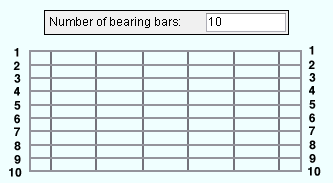
Note: Changing the number of bearing bars entered here changes the " Grating width ." Each bearing bar will be as long as the grating length is long.
Report Writer: XXXXX . NumberOfStringersInGrate
Report Writer: NumberOfStringersInGrate
Bearing bar depth: The depth (in the primary dimension " Units " or other units ) of any one bearing bar. This dimension is measured perpendicular to the workline of the grating; for grating laid out in a plan view, the bottom surface of the grating will be at the same elevation as the workline. All bearing bars will be this same depth. The end bands will also be this same depth.
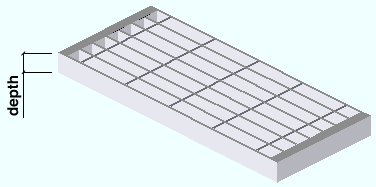
Report Writer: XXXXX . BearingBarWidth
Report Writer: BearingBarWidth
Bearing bar thickness: The thickness (in the primary dimension " Units " or other units ) of any one bearing bar. All bearing bars will be this same thickness.
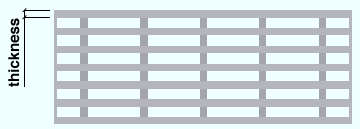
Note: Changing the thickness entered here causes the " Grating width " to be recalculated.
Fabricator Setup: Add bearing bar thickness to grating description ( Member Detailing Settings )
Report Writer: XXXXX . BearingBarThickness
Report Writer: BearingBarThickness
Bearing bar spacing: The distance from the center of one bearing bar to the center of the next bearing bar.
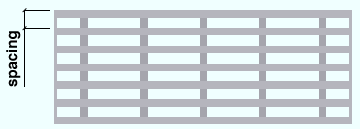
Note: Changing the spacing between bearing bars that is entered here causes the " Grating width " to be recalculated.
Report Writer: XXXXX . BearingBarSpacing
Advanced Selection: BearingBarSpacing
Parametric module: BearingBarSpacing
Number of cross bars: read-only . This tells you the number of bars that are parallel with the grating's Y material axis , not including the end bands.
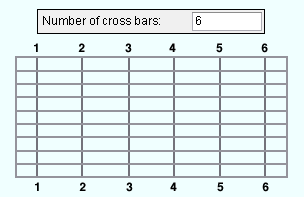
Note: To change the number of cross bars that is entered here, you can adjust the " Grating length " or change the " Cross bar spacing " or " End band thickness ."
Cross bar depth: (data only) The distance measured perpendicular from the top edge (walking surface) of the cross bars to the bottom edge of the cross bars.
Note: The cross bar depth is not shown 3-dimensionally in the model.
Report Writer: XXXXX . CrossBarWidth
Cross bar thickness: The thickness (in the primary dimension " Units " or other units ) of any one cross bar. All cross bars are this same thickness.
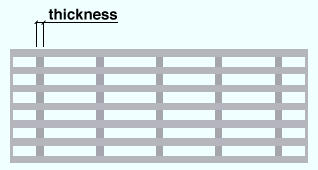
Report Writer: XXXXX . CrossBarThickness
Cross bar spacing: The spacing (in the primary dimension " Units " or other units ) from the center of one cross bar to the center of the next cross bar. In the illustration below, this is the spacing between between the one cross bar and the next cross bar plus the thickness of the one cross bar.
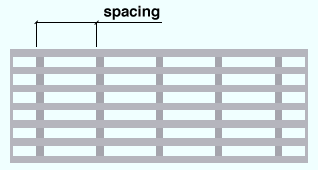
Note: Changing the spacing of the cross bars that is entered here may cause the " Number of cross bars " to be recalculated. For instance, if you were to increase the cross bar spacing, the " Number of cross bars " might decrease since the " Grating length " would remain the same.
Report Writer: XXXXX . CrossBarSpacing
Grating grade: The steel grades that you can select in this list box ( ![]() ) come from Home > Project Settings > Job > Grating Grades .
) come from Home > Project Settings > Job > Grating Grades .
Bill of material: Steel Grade
Status Display: Member status > Steel grade
Advanced Selection: MaterialGrade
Parametric module: MaterialGrade
Surface finish: None or Sandblasted or Red oxide or Yellow zinc or Gray oxide or Blued steel or Galvanized or Duplex Coating or Undefined 1 or Undefined 2 or Undefined 3 or Red oxide 2 or Any user added surface finish. This affects the colors of Solid members on erection views in the Drawing Editor . This also sets the color when Output material color is set to Surface finish for a VRML Export or a DWG/DXF Export. The Color (not Surface finish) sets the color of this material in Modeling .
| sand blasted | red oxide | yellow zinc | user surface finish 1 |
| gray oxide | blued steel | galvanized | user surface finish 2 |
To assign a different surface finish, you can drop-down the current surface finish and select the one you want, or you can press the
browse button and double-click any surface finish that is on the list.
Auto ![]() or
or ![]()
If this box
is checked, the material surface finish follows what is set on the member level.
If the box
is not checked, the material surface finish can be changed to whatever is available in the list of surface finishes. If the surface finish changes from what the member level has set, the auto checkbox will be unchecked automatically. When the auto check box is unchecked, the member edit window shows an information tag which notifies the user that an attached material is not following what was set on the member level.
Note 1: Submaterial piecemarks can be split apart by surface finish. All surface finishes that do not have the Break Marks Material checked on can be applied to any like material with out the material splitting. If the Break Marks Material is checked on then only like materials with that specific surface finish can have the same piecemark, and because the submaterial marks differ so would the member's piecemark.
Note 2: When exporting a KISS file using "model" as the Data source surface finish data on the materials are compiled into the KISS download as follows, with a few exceptions (G=galvanized, N= none or sandblasted, P= others). Those exceptions are:
If the box for Finish routing in KISS export setup is set to a user routing
If the user has adjusted the Abbreviation for any of the default provided surface finishes
If you are using a user added surface finish
In these cases you will get what is provided in either the User routing, or the abbreviation field. For other exports it will always provide the abbreviation in the 'surface finishes' settings page.
Tip 1: Surface area is reported on the General Information window -- and this can be used to estimate the amount of coating required and its cost.
Tip 2: Changing Steel grade, Color, and Surface finish do not cause the plate to be regenerated. This means that, if you change those settings only, material fit operations such as a Fit Exact may optionally be preserved.
Report Writer: MemberMaterial.Material.SurfaceFinish
Setup: Surface Finish Settings
Color: A predefined color or a Custom Color . This is the approximate color of the grating material when it is displayed in one of the three solid forms .
The predefined colors are set up on the Predefined Colors window. The color swatch next to the list box (
) displays the color that is selected.
Select ' Custom Color ' (last choice on the list) to launch your operating system's color picker and define any color you like.
Tip 1: Different colors may be assigned to materials that have the same submaterial piecemark .
Tip 2: Changing " Color " and " Surface finish " do not cause the material to be regenerated. This means that, if you change those settings only, material operations such as a Cut on Plane may, optionally, be preserved.
Report Writer: MemberMaterial.Material.MaterialColor3dRed
Report Writer: MemberMaterial.Material.MaterialColor3dGreen
Report Writer: MemberMaterial.Material.MaterialColor3dBlue
| Special Buttons for Detailing this Material (these do not appear for Add operations) |
||
|
|
|
|
| This button opens a window with a list of preset views . Each preset view that you select on this list is drawn on the submaterial detail when you Detail Submaterial . | This button opens a list of views you can delete. If the material has only one view, you get a warning instead of a list of views since you cannot delete the current view. | This button does a Detail Submaterial on this material. Newly added views are drawn on the detail. Deleted views are not drawn. |
------ Left end settings ------ | ------ Right end settings ------
| This material's left end is the end where the first work point of the material was located. This first work point is also this material's 0,0,0 point in the material coordinate system. The point is identified by the origin reference point symbol at the beginning of a Material Rotate operation. |
Report Writer: XXXXX . LeftEndCutAngle
Report Writer: XXXXX . RightEndCutAngle
End band thickness preparation: The thickness (in the primary dimension " Units " or other units ) of the left/right end band.
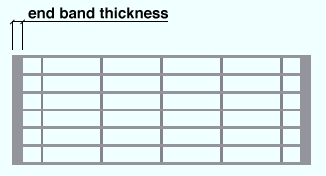
Note: Changing the thickness that is entered here may cause the " Number of cross bars " to be recalculated.
Report Writer: XXXXX . LeftEndBandThickness
Report Writer: XXXXX . RightEndBandThickness
Advanced Selection: EndBandThickness[0] or EndBandThickness[1]
Parametric module: EndBandThickness[0] or EndBandThickness[1]
General Information opens the General Information window, which provides additional information and settings that pertain to this material.
Tip: You can use the General Information window to change the material's X, Y, or Z global coordinates (and thus reposition the material within the 3D model).
Also: A Properties button at the bottom of the General Information window lets you Edit Properties for this material.
Material Operations opens the Material Operations window.
Tip: You can use the Material Operations window to delete or edit a stored material operation.
Note: Not all material operations are stored in the Material Operations window. Material Fit Exact, Material Fit Cope, Material Fit Notch, and Cut Layout are the only material operations that are stored here.
OK (or the Enter key) closes this window and applies the settings on it to the material(s).
Defaults: Even if you did not make any changes on this window, pressing OK causes many of the General settings on this window to be applied as the defaults for the next material of the same type that is added in your current session of Modeling.
If you opened this window to edit a single material (single-edit), the Change All Options & Warning List opens after you press the OK button. You can use that window to cancel your changes or, if other materials with the same submaterial piecemark exist, apply your changes to those other materials. Also, if a Cut On Plane or related cutting/bending/fit operation (that does not get stored in the Material Operations window) was previously done on this material, you are given the option to undo that operation.
If you opened this window to edit multiple materials (multi-edit), the Change All Options & Warning List does not open after you press the OK button. Also, if a Cut On Plane or related cutting/bending/fit operation (that does not get stored in the Material Operations window) was previously done on this material, you are not given the option to undo that operation.
Cancel (or the Esc key) closes this window without saving any changes.
Possibilities: If you are adding a new material, Cancel brings you back to the work point location step (step 2) in the add operation. For an edit material operation, Cancel ends the operation.
Tip: When you open this window to review information only -- and you do not want to set the defaults for the next-added rectangular plate -- the best way to close this window is to press Cancel.
Reset undoes all changes made to this window since you first opened it. The window remains open.
Note: The settings shown on this window when it first opens for the adding of a material are the settings of the last-added or last-edited material of the same type (unless you exit Modeling in the meantime).
Clear fills out this window with default settings when adding material. It is disabled during an Edit Material operation. These are the same defaults that are applied when the first new material is added during a session of Modeling in which no other material of the same type has been edited. For example, Clear automatically selects the default Steel grade and zeros out the all Left/Right End Settings.
- Grating miscellaneous member
- Add bearing bar thickness to grating description ( Home > Project Settings > Fabricator > Member Detailing Settings > " Miscellaneous " tab > )
- Altering a legacy miscellaneous member's main view
- Add Miscellaneous Member
- Miscellaneous Member Edit window (general settings and related topics)
- Miscellaneous Steel (default misc. member types)
- Legacy Miscellaneous Member Edit window
- Settings on material windows for Add Legacy Miscellaneous Member
- Legacy Miscellaneous Steel (legacy misc. member types)
- Altering a legacy miscellaneous member's main view







